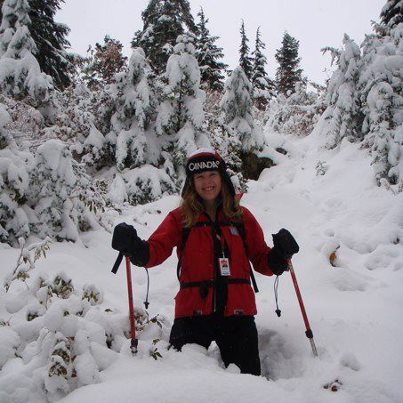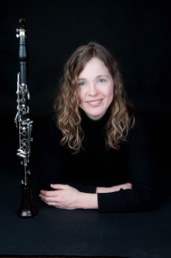|
In This Issue November 14, 2012
|
- A Note From Michelle Anderson - Time to play in the snow...
- Clarinet Tips - Let's figure out how to move fingers faster and more easily
- Free Training - A great video to help your left hand establish great habits for more speed and fluid technic
- Free Teleseminar - Join me on a live call to ask your clarinet questions Monday November 19
- Michelle Recommends - Three's A Crowd - fun trios for flexible instrumentation
|
A Note from Michelle Anderson
|
Hello Everyone,
A big welcome to all of you who are reading the Clarinet Mentors newsletter for the first time. If this is your first newsletter, I hope that you find great content to help you play the clarinet more easily. These newsletters are sent to the Clarinet Mentors community every two weeks, usually on Wednesdays.
I have been enjoying the emails and comments that I have received from you lately. I am amazed by how many places in the world that Clarinet Mentors members live. The internet has truly allowed us to share knowledge world-wide.
Here in Vancouver, where I live, those of us who like to play in the mountains are eagerly looking forward to the first "real snow" of the season. We can drive about half an hour up the hill, and have lots of snow to play in, and admire it in the distance from our windows, (but no snow at home to shovel or shiver in). We had a great initial snowfall about 10 days ago that then melted, but I think the snow is now finally settling in for the season. Here is a photo of me playing in our first batch of snow of the year. Somehow, I hope to play up there again amidst all of my December concerts.
Enjoy the climate wherever in the world you are, and thanks for being a part of my community!
 
In my teaching, I notice that many adult players eventually hit a section of music that just goes "too fast", or has too many notes for their fingers to handle. (Frankly, I've had those moments myself. There were sections of John Adams "Nixon In China" clarinet parts that had me sweating after several hours of preparation.)
There are many tools to help us to improve our finger technic and speed. I will be presenting some for the next couple of newsletters. Perhaps one of the most basic things we can do to improve our technic is to ensure that our hands and fingers are in the best position for moving around the clarinet. Today's Free Training video, aimed at less-experienced players, covers one aspect of this - our left-hand index finger position. This sounds kind of clinical and boring, but I have seen many players greatly improve their speed while "crossing the break" (going from the low register to the high register), simply by changing this one finger. I highly recommend that you try this out. You will learn something valuable!
Improving Finger Speed By Knowing How to Place the Left Hand
Please watch this training video to learn one tool that will help you to develop faster fingers, and better technic on the clarinet. There are three general good habits presented:
- Play with your fingers in a rounded, arched position.
- Train your fingers to "hover" over their usual holes at all times so that they do not need to move much as you change notes.
- Always move your fingers in a relaxed and gentle motion so that you do not "smack" the keys with forceful pressure.
The exercise presented in this video, specifically helps you to place the index finger on your left hand into a better position. This will really speed you up as you move from a throat tone Bb or A into the higher register. Many people play this key in an incorrect position, and are unaware of doing so. As strange as it may feel when you move into the correct position, you will notice an immediate difference in your finger smoothness and speed.

Click on the image above to view this video. I have more videos currently in production. If there are topics that you would like help with, please send me some suggestions. If you are on Facebook, you can post your comments at: https://www.facebook.com/pages/Clarinet-Mentors/237380966382664
|
Sign Up For A Free Teleseminar With Michelle Next Monday
|
As the Clarinet Mentors community grows, I have been really enjoying the contact I have had with many of you. Once of my next projects is to host a Clarinet Mentors teleseminar/webinar. A teleseminar is basically an online, interactive, presentation where you can listen in on your telephone, or through your computer. You will be able to ask questions, type in comments and watch slide shows or videos. This allows me to have more interaction with you and to share some great clarinet knowledge.
My first teleseminar, is scheduled for Monday, November 19th from 11:00 am to 12:00 noon, PST. You can figure out what time that is for you by going to https://www.timeanddate.com/worldclock/converter.html. (Please register even if you are unable to watch at that time. All people who register will receive access to a replay of the event shortly after it finishes.) This teleseminar/webinar will be aimed at clarinetists who consider themselves to be at a beginning to intermediate level. My plan is to offer a few of these in the upcoming months, each one with a slightly different focus. (My apologies for the changing times on this event. My schedule continues to fill with various musical endeavours this month.)
Since I have just finished filming my extensive, 10-lesson beginner clarinet video and workbook package, I feel full of tips and pointers for this level of player. This course is designed for less experienced players, and covers most of the core basics to sounding good on clarinet (as well as how to read music). On this teleseminar all of you who have questions or concerns about the most important fundamentals of clarinet playing will be able to have your questions answered by me. My plan is to present some valuable learning for you and then simply answer your questions for the remainder of the hour.
Please join me. It should be really fun! You need to fill in a registration form to sign up. Just like when you enrolled in the Clarinet Mentors newsletter, you'll automatically get an email asking you to confirm that you are actually signing yourself up. That will put you on my registration list, and allow me to send you the further details that you will need to access the call.
(registration closed) REGISTER BY CLICKING HERE!
I'm excited to try this out with all of you! If you live in a time zone where you cannot attend live, I will arrange for a replay to be available for a couple of days after the event. (You must register in the box above to have access to this.) I hope to "see" you all there!
Three's A Crowd
Sometimes you may want to play duets or trios with other clarinetists, or you may have an unusual combination of instruments. The Three's A Crowd series, edited by James Powers, are published for a variety of instruments so that you can create a variety of instrumental combinations. They sound great with three clarinets, but you could also have clarinet, flute and trombone. There are books published for brass (2 trumpets and a bass instrument), violin, flute (and oboe could play some parts here), saxophones, french horn, and clarinet. There is also a piano accompaniment part.
The arrangements are easy - intermediate trios of well-known pieces. There is even a Christmas book for those of you who may want some holiday tunes to play. If you want some fun and easy music that you can use with a flexible group of performers, you should check them out.
Michelle Anderson is a professional clarinetist and teacher who currently lives in Vancouver BC. She has been a professional performer for 30 years and plays regularly with the Vancouver Opera Orchestra, the Pacific Symphonic Wind Ensemble and the West Coast Chamber Music series. She has performed with the Vancouver Symphony Orchestra, the CBC Vancouver Orchestra, the Winnipeg Symphony Orchestra, the Royal Winnipeg Ballet Touring Orchestra and many other groups. Michelle currently specializes in teaching adults to play clarinet more easily and quickly, and conducts the Vancouver Clarinet Choir.

Thanks for reading this biweekly newsletter.
|
|
Helping you to find success on your instrument with sound teaching techniques, and useful learning systems.
|
|
|



